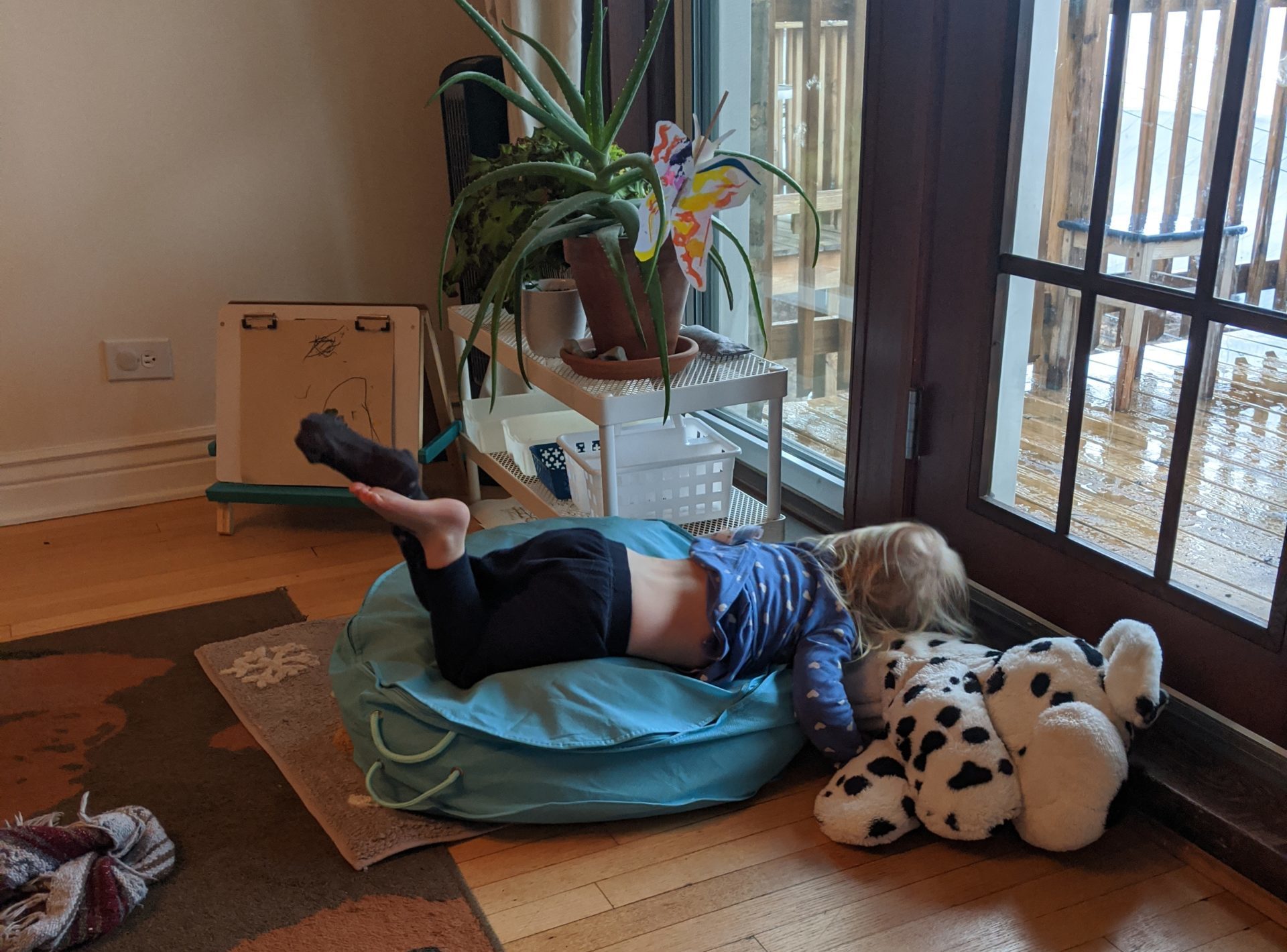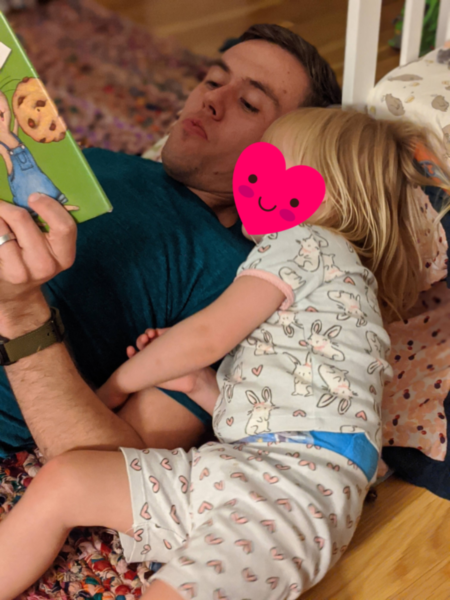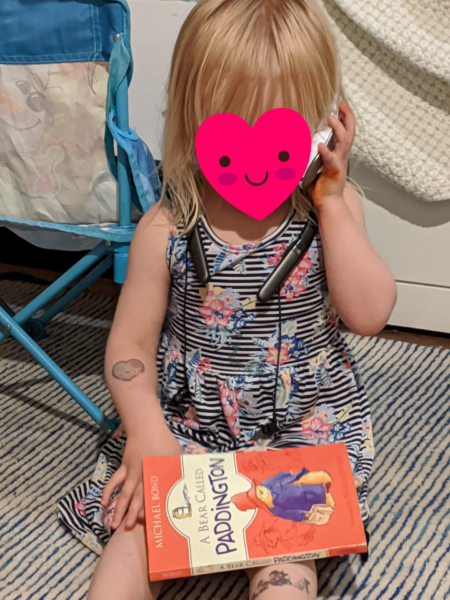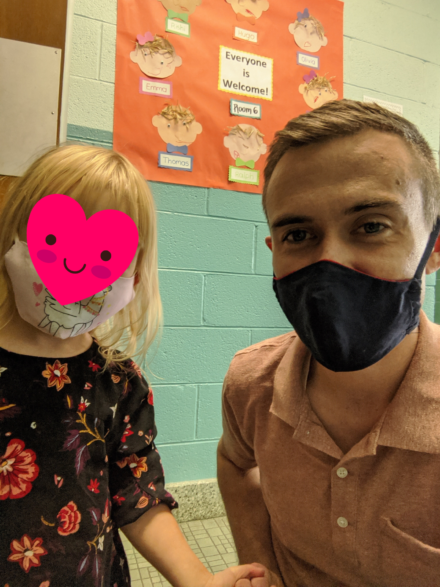This time last week, I was fighting (losing) round 127 of the ongoing “Nap or no Nap?” game my three-year-old daughter invented sometime around month three of quarantine. The fun thing about this game: there are no winners. You can have a miserable afternoon or a miserable evening. Sometimes, you can have a miserable both.
Today, I’m writing this in a kid-free room, over the course of several hours in the middle of a workday. The sun is shining outside. I had a decent conversation with my wife at lunch—without a child yelling at me to stop talking. What I’m trying to say is: I’m enjoying impossible luxury.
For the first time in six months, we have child care for our daughter.
Adjusting to a new abnormal

My wife and I switched to working in shifts, one ducking into the bedroom for a few frantic hours while the other tried to entertain our daughter. We tried recreating a Montessori-style setup in our dining room. We instituted a schedule—immediately bent, quickly broken, soon abandoned—and cobbled together stations, activities, and homemade versions of the “work” found at her school. With business stalled, I went on unemployment. Tried to finish the first draft of a novel. We moved to a new apartment, hosted our mothers for a few days apiece, and saw little of anyone else all summer. And throughout most of this period, my wife was (very) pregnant.
Our second child was born in July. I took a month of paternity leave. Then, we resumed all of the above (aside from moving, thankfully). Except now, we had a newborn.
It was the best of times; it was the worst of times.
Losing and regaining child care
 This is true: six unexpected months at home with my daughter were sweet.
This is true: six unexpected months at home with my daughter were sweet.
It’s rather helpful to have all the shared experience to discern what a three-year-old wants to communicate. When she says “read the birthday party,” she means the Zoey story from Sesame Street: Big Book of ABCs and 1,2,3s. When she insists that we play “knights”—and that playing knights absolutely requires us to locate a treehouse—I know which episode of “Cookie Mouse” (If You Give a Mouse a Cookie) she’s drawing from for her game idea.
Also true: my daughter going back to daycare brings its own sweetness.
Once again, we get to hear unfamiliar ideas and stories bubble up in that delightful, three-year-old jumble of words and excitement. Again, we must try to parse all her big, breathless, hilarious pronouncements. And once again, she has thoughts and memories from things she experiences without me.
This is good for my daughter. And for my family. And for me. Life is richer when it includes diverse perspectives and ideas.
I also appreciate having fewer 16-hour days corralling a three-year-old.
How we decided to resume child care
Sending our eldest daughter back to in-person care was a decision we didn’t make lightly. Her daycare reopened with smaller class sizes and strict health protocols in June, but we kept her home another four months. We delayed because of a high-risk pregnancy, and then to keep our newborn healthy.
A friend reminded me of the Jim Gaffigan quote shortly after my wife gave birth: “You know what it’s like having four kids? Imagine you’re drowning. And someone hands you a baby.”
While we weren’t welcoming our 4th child, this still felt like an apt description for bringing a newborn into a house dominated by (1) a threenager and (2) a global pandemic.
The information and research available about COVID and newborns was (still is) sparse and confusing. One doctor advised we quarantine our family until the baby is at least six months old. (This unleashed some reserve of tears we didn’t know we had.) The closest we found to a consensus was: wait until the baby is at least eight weeks old (and has their two-month shots) before widening our circle beyond our family. Even still, we felt trapped.
How could we make a choice that adds risk for our infant daughter? With privileges like flexible work arrangements and emergency savings, there wasn’t a boss breathing down our necks, forcing our hands. We didn’t have to change anything.
Learning to tackle smaller questions

In truth, we were drowning—at least I was. Parenting full-time and trying to work in whatever gaps I could find was both emotionally and mentally debilitating.
Both my wife and I work, and we would prefer to keep it that way. We love being parents; we love our professional passions and abilities too.
Through savings, work flexibility, and a couple vital public safety net programs, we were able to work remotely and minimize potential exposure. But even with many privileges and support systems, this experience uniquely broke down or severed so much of what makes life sustainable for us.
Over and over, we’d wrestle with the same unanswerable questions, pour over CDC recommendations, and refresh our newsfeeds.
Processing with my counselor helped shrink the size of the questions we were trying to answer. While still immensely complicated, this shift made our immediate decisions much less overwhelming.
| Try asking… | Instead of… |
|---|---|
| “What’s safe right now? What risks are we willing to take?” | “When will most places and activities be safe again?” |
| “Who do we feel comfortable including in the circle of people we see?” | “When can our social lives return to ‘normal’?” |
| “What can we handle? What do we need?” | “What’s the best possible choice or set of circumstances?” |
We’re approaching these decisions reminding ourselves — both now and in the future — that we’re making the best choices we can with the limited information we have. That’s all we can do.
It’s all anyone can do.
Making the better decision for our family
 We still don’t know what (or when) child care might look like for our newborn. Perhaps now that one child is in daycare, we can begin to have that conversation.
We still don’t know what (or when) child care might look like for our newborn. Perhaps now that one child is in daycare, we can begin to have that conversation.
I’m grateful for the brain space freed-up by having outside care for our firstborn. And I’m realizing how emotionally and socially drained I was from providing full-time child care. (I also appreciate other little things, like making life-altering decisions without a toddler shouting: “I. Want. Attention!”)
I can’t say if our decision is the best option for everyone—or anyone else. I can’t even say if it’s the best possibility for us.
But it’s certainly better.
As I wrote early in the pandemic: I love my daughter (now, daughters) more than anything. AND I am so tired of playing with her.
Luke Chitwood is a writer, non-profit professional, and education advocate based in Chicago. A beginner-level husband and father, you can find him wrangling words and images, in perpetual pursuit of his next cup of coffee.

